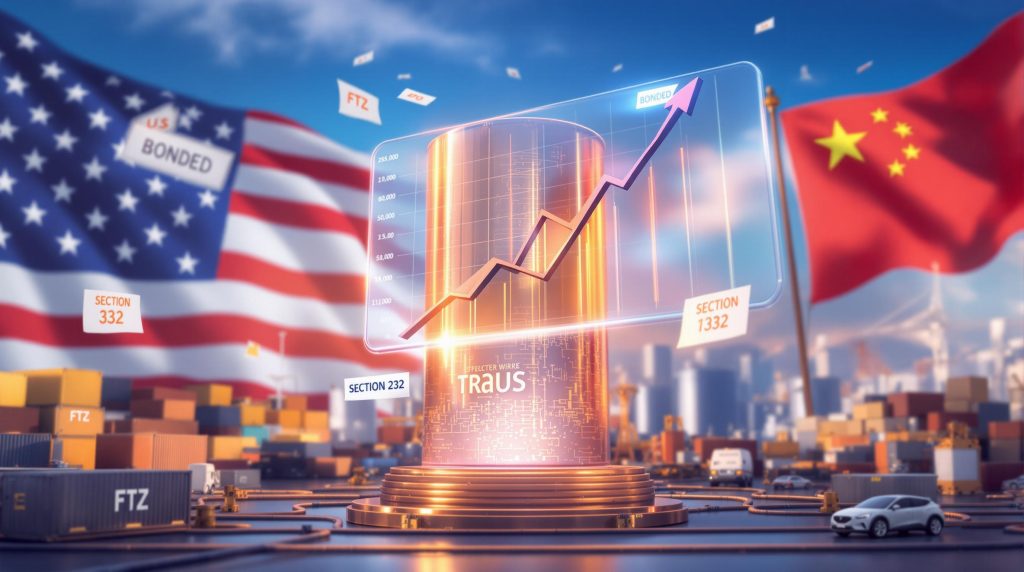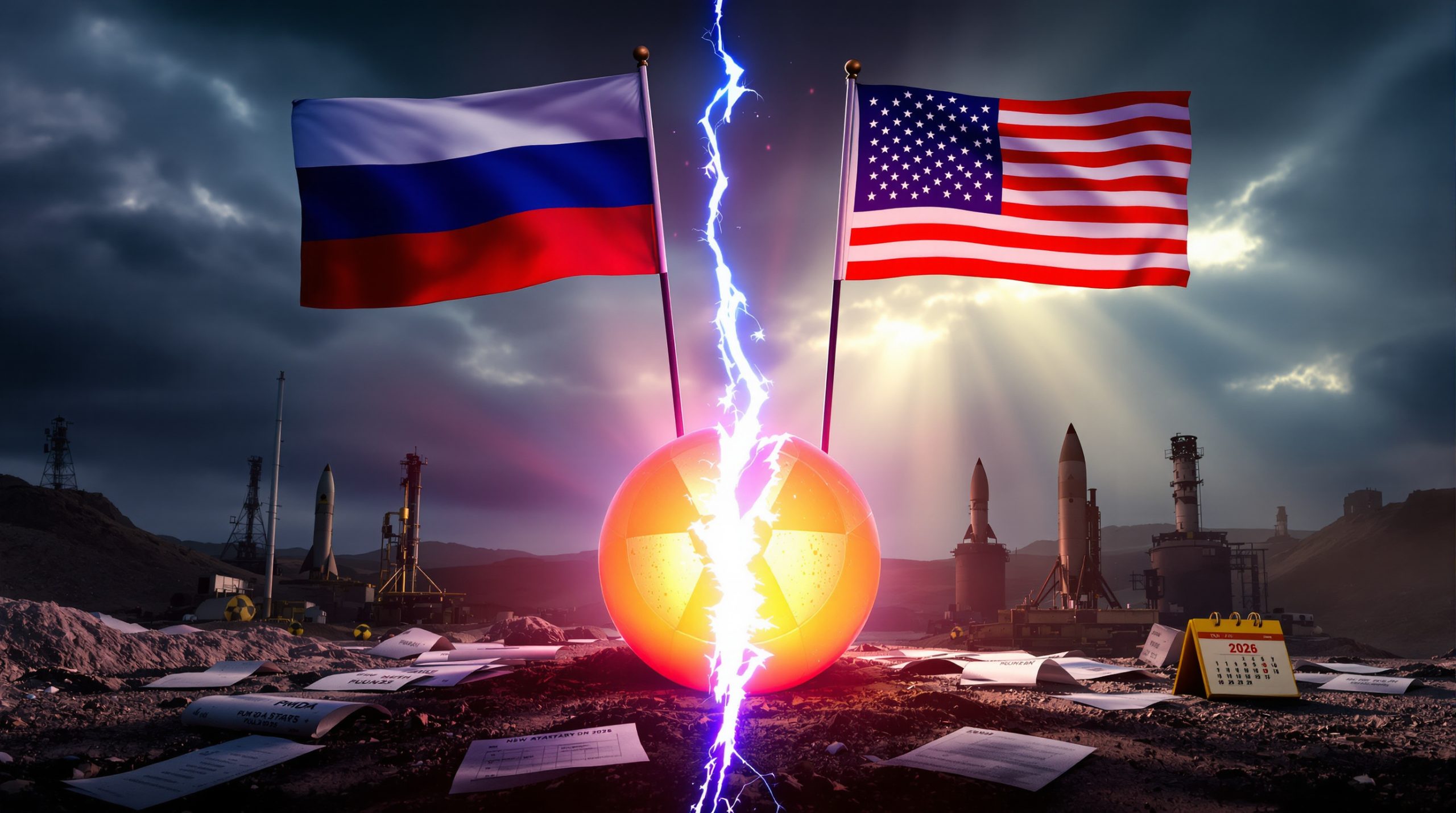Understanding Section 232 Copper Tariffs: Impacts, Alternatives, and Market Implications
In the complex world of international trade, few policy mechanisms have as much potential to reshape markets as Section 232 tariffs. These trade measures, originally designed to protect national security interests, have become powerful tools that can significantly impact global commodity flows—including critical materials like copper. This article explores the recent developments in copper section 232 tariffs, their market implications, and the strategic options available to market participants navigating this uncertain landscape.
What Are Section 232 Tariffs and How Do They Affect Copper Markets?
Section 232 of the Trade Expansion Act of 1962 grants the U.S. President authority to adjust imports of goods deemed to threaten national security. Unlike other trade remedies that address unfair competition, Section 232 focuses specifically on protecting domestic capacity for materials considered essential to national defense and critical infrastructure.
When applied to copper—a vital material for electronics, construction, transportation, and renewable energy—these tariffs create ripple effects throughout global supply chains. The metal's crucial role in both traditional infrastructure and emerging green technologies makes it particularly sensitive to trade policy changes.
The Fundamentals of Section 232 Trade Measures
Section 232 investigations begin with the Department of Commerce evaluating whether imports of specific goods threaten to impair national security. This assessment considers factors including domestic production capacity, existing and anticipated needs for national defense, and the impact of foreign competition on the economic welfare of specific domestic industries.
For copper specifically, the national security justification centers on the metal's essential role in defense applications, electrical infrastructure, and increasingly, renewable energy systems. The U.S. relies heavily on imported copper to meet its needs, creating vulnerability that Section 232 measures aim to address.
Unlike antidumping or countervailing duties that target specific unfair trade practices, Section 232 tariffs apply broadly based on product classification rather than country of origin or exporter behavior. This universal application creates significant market-wide effects rather than company-specific impacts.
Recent Developments in Copper Tariff Considerations
In a significant development, the U.S. opted not to impose Section 232 tariffs on copper cathode imports as of August 1, 2025, averting a potential market disruption. This decision came after months of uncertainty that had already reshaped trading patterns.
"When the US opted not to impose Section 232 tariffs on copper cathode imports last month, the market breathed a sigh of relief," noted industry observers in a Fastmarkets report from August 2025.
Despite the reprieve, the market continues to deal with the aftermath of anticipatory measures. Importers had front-loaded shipments ahead of the August 1 deadline, resulting in hundreds of thousands of tonnes accumulating in U.S. warehouses and ports—much of it uneconomic under current arbitrage conditions.
This inventory buildup demonstrates how even the threat of tariffs can create significant market distortions, with effects lingering long after policy decisions are made.
How Would Section 232 Tariffs Impact Global Copper Trade Flows?
The imposition of Section 232 tariffs would fundamentally alter copper's global trading patterns. When markets anticipate such measures, they typically respond with preventative action, creating distortions even before implementation.
Supply Chain Disruptions and Adaptations
The front-loading phenomenon observed ahead of the August 2025 deadline illustrates how tariff threats immediately reshape trade flows. Importers accelerate shipments to avoid potential duties, creating artificial demand spikes followed by periods of reduced activity.
This boom-bust cycle places tremendous strain on logistics infrastructure, warehouse capacity, and working capital for market participants. Downstream manufacturers face particular challenges as they must either absorb higher costs or attempt to pass them to customers, potentially losing competitive position against international rivals not subject to similar cost pressures.
When traders anticipate tariffs, they typically divert shipments to warehouses and storage facilities, creating inventory buildups that can take months or even years to normalize once market conditions change.
Price Effects and Market Distortions
Section 232 tariffs typically create premium/discount dynamics between U.S. and international markets. American prices tend to rise relative to global benchmarks, reflecting the additional cost of the tariff plus associated logistics and compliance expenses.
This price differential creates arbitrage opportunities but also fragments the global market. Price discovery becomes more complex as regional premiums fluctuate based on both fundamental supply/demand factors and policy developments.
"The tariff exemption avoided one crisis—preserving LME warranting and cross-exchange fungibility—but the market still faces the challenge of managing the excess copper," according to Fastmarkets analysis from August 2025.
For industries that rely on copper as a critical input, these price distortions complicate long-term planning, potentially accelerating efforts to reduce copper intensity or seek alternative materials where possible. Additionally, US tariffs pushing copper price retreat has created uncertainty in the investment landscape.
What Storage Options Exist for Copper Under Tariff Regimes?
When facing potential Section 232 tariffs, copper market participants have two primary storage options, each with distinct advantages and limitations: Foreign-Trade Zones (FTZs) and bonded warehouses.
Foreign-Trade Zones (FTZs) as a Strategic Buffer
Foreign-Trade Zones operate as designated areas considered outside U.S. Customs territory for duty purposes. Goods entering FTZs can be stored, handled, manufactured, or reconfigured without being subject to customs duties until they enter U.S. commerce.
However, FTZs come with significant limitations under Section 232 scenarios. Most critically, U.S. customs rules would automatically assign Privileged Foreign (PF) status to copper entering FTZs under Section 232 tariffs. This status locks in the duty rate at the time of entry.
"That status cannot be changed, even if the metal is processed, reclassified, or stored for years, a rule intended to prevent importers from avoiding tariffs by holding stock until conditions improve," explains Fastmarkets.
This restriction means FTZ storage would primarily benefit traders planning to eventually re-export the copper, as no duties would be owed if the metal never enters U.S. commerce. However, the PF status requirement creates a significant limitation: copper stored in FTZs cannot receive London Metal Exchange (LME) warrants, which require Non-Privileged Foreign (NPF) status.
Bonded Warehousing Alternatives
Bonded warehouses offer an alternative to FTZs with several distinct advantages for copper traders navigating potential Section 232 tariffs.
Unlike FTZs, bonded facilities aren't subject to PF/NPF status classifications. This critical difference means LME-warrantable copper can be stored in bonded warehouses even under Section 232 tariffs, with duties owed only if the metal enters U.S. commerce.
"Bonded warehouses are storage-only, so processing or manufacturing is not allowed, and space can be tight and more expensive," notes Fastmarkets. "For traders, they offer a way to maintain optionality in a rigid duty environment."
This flexibility explains why "market participants have been scrambling to secure space" in bonded warehouses, despite their higher costs and limited availability. The ability to maintain LME warranting eligibility represents a significant advantage that often justifies the premium.
The key trade-off becomes clear: FTZ storage allows copper to eventually leave the country duty-free but bars it from LME warranting, while bonded storage preserves LME eligibility but may tie up inventory and incur higher costs.
How Do Exchange Warehousing Rules Interact With Tariff Policies?
Exchange warehousing rules create additional complications when navigating Section 232 tariffs, with important differences between the London Metal Exchange (LME) and COMEX systems.
LME Warehousing Requirements and Complications
The LME requires copper stored in U.S.-approved warehouses to have Non-Privileged Foreign (NPF) status. This requirement ensures duties can be calculated when metal leaves the warehouse, maintaining the fungibility of LME warrants and uniform pricing across stocks.
This NPF requirement creates a fundamental incompatibility with Section 232 tariffs, which would automatically assign Privileged Foreign (PF) status to copper entering Foreign-Trade Zones. This incompatibility effectively blocks the FTZ pathway for LME warranting under tariff scenarios.
This technical conflict highlights how tariff policies can disrupt established market mechanisms for price discovery and physical delivery. By fragmenting the market between tariff-affected and tariff-exempt material, Section 232 measures potentially undermine the efficiency of global copper supply forecast and benchmark pricing.
COMEX Warehousing Structure and Differences
The COMEX copper contract operates on a fundamentally different structure than the LME system. Its warehouses are entirely domestic, and the copper contract is duty-paid, meaning duties must be paid on entry to warehouses for deliverable material.
This structural difference creates complications for cross-exchange arbitrage under tariff scenarios. As Fastmarkets explains, "Moving copper from COMEX into LME US warehouses would only make sense if the arbitrage were significantly in the LME's favor to justify the cost and effort."
The distinct approaches to warehousing between exchanges means traders must develop exchange-specific strategies rather than treating copper as a truly fungible commodity across marketplaces.
What Strategies Are Copper Traders Adopting to Manage Tariff Risks?
Given the complex interplay between tariff policies and warehousing options, copper traders have developed sophisticated approaches to maintain flexibility while minimizing exposure to potential duty costs.
Inventory Management Approaches
Strategic inventory positioning represents the first line of defense against tariff risks. Traders increasingly secure bonded warehouse space as a contingency measure, allowing them to maintain LME warranting eligibility while preserving the option to either pay duties for domestic sale or re-export without duty liability.
This approach requires careful cost-benefit analysis. Bonded storage typically commands premium rates compared to standard warehousing, and space limitations can create competition for capacity, especially during periods of tariff uncertainty.
The decision framework considers multiple variables including:
- Current and projected premium/discount between U.S. and international markets
- Storage costs across different warehouse types
- Financing costs for inventory
- Expectations for policy developments
- Anticipated holding period
For traders managing large positions, diversifying storage across different facility types provides maximum flexibility to respond to evolving market conditions and policy changes.
Cross-Border Trade Adjustments
Beyond storage strategies, traders increasingly explore product transformation approaches to navigate tariff classifications. Since different forms of copper may face varying tariff treatments, processing material to shift classification can create strategic advantages.
For example, converting cathode to wire rod or other semi-fabricated products might allow access to more favorable duty treatment depending on specific tariff structures. However, such strategies require careful analysis of processing costs against potential duty savings.
Documentation and compliance requirements add another layer of complexity. With heightened scrutiny on origin documentation and classification, traders must invest in robust compliance systems to avoid costly mistakes or enforcement actions.
What Are the Broader Economic Implications of Copper Tariffs?
The impact of Section 232 copper tariffs extends far beyond trader strategies and warehouse dynamics, potentially reshaping manufacturing competitiveness and global market efficiency.
Impact on U.S. Manufacturing Competitiveness
For downstream fabricators and manufacturers, tariffs on primary copper inputs create immediate cost pressures that international competitors may not face. This cost differential can erode competitiveness, particularly in price-sensitive product categories.
While tariff proponents argue that such measures protect domestic copper production, critics counter that the far larger downstream manufacturing sector faces disproportionate harm. The fabrication, electrical, construction, and transportation sectors all rely heavily on copper inputs and employ significantly more workers than primary copper production.
This tension highlights the inherent trade-offs in industrial policy. Measures designed to protect upstream production can inadvertently disadvantage downstream manufacturers, potentially leading to reduced output, employment losses, or even production relocation to avoid tariff costs. Understanding the tariff impact on ASX copper stocks provides additional insight into these dynamics.
Global Market Distortions and Inefficiencies
On a global scale, Section 232 tariffs create artificial redirection of trade flows that increase overall system costs without necessarily changing total production or consumption.
As shipments reroute to avoid tariffs, transportation and logistics costs increase. Longer supply chains not only add financial costs but also environmental impacts through increased emissions from longer shipping routes.
"Should Section 232 ever be applied to copper, the market would face significant disruption, with traders forced to make difficult logistical and financial decisions to keep supply flowing," notes Fastmarkets.
Market fragmentation represents another consequence, as regional price differentials undermine the efficiency of global benchmark pricing. Reduced liquidity in specific regions can widen bid-ask spreads and increase price volatility, creating additional hedging challenges for market participants.
How Might Future Trade Policy Developments Affect Copper Markets?
While copper cathode received an exemption from Section 232 tariffs in August 2025, market participants remain alert to potential policy shifts that could reintroduce tariff risks.
Potential Policy Scenarios and Market Responses
Several indicators may signal increased likelihood of future Section 232 applications to copper or related products:
- Widening trade deficits in copper and copper products
- Declining domestic primary production capacity
- Increased emphasis on supply chain security for critical minerals
- Growing defense applications for copper in emerging technologies
- Geopolitical tensions with major copper-producing nations
Market participants closely monitor these factors alongside more traditional supply/demand fundamentals when developing long-term strategy.
Preparation strategies include:
- Geographic diversification of supply sources
- Investment in flexible logistics infrastructure
- Development of alternative product specifications
- Enhanced monitoring of policy developments
- Scenario planning for various tariff implementations
"For now, the bonded warehouse loophole provides a crucial buffer, but the risk hasn't gone away," cautions Fastmarkets.
Long-Term Structural Adaptations
Beyond immediate tactical responses, the copper industry continues developing structural adaptations to navigate potential future trade restrictions.
Exchange operators evaluate rule modifications that could accommodate tariff realities while preserving market functionality. This might include special warrant classifications or delivery mechanisms that address the PF/NPF status challenges.
New trading mechanisms and instruments are also emerging to help market participants manage tariff-related risks. Just as basis trading developed to manage location differentials, new instruments may evolve to efficiently price and transfer tariff risk between parties.
Infrastructure development for alternative storage solutions represents another adaptation, with specialized facilities designed to maximize flexibility under various regulatory scenarios. These developments complement ongoing US copper investment insight initiatives.
Navigating the Copper Market Under Tariff Uncertainty
For copper market participants, effective navigation of tariff uncertainty requires both tactical agility and strategic foresight.
Key Risk Indicators to Monitor
Proactive risk management begins with monitoring several key indicators:
- Political signals: Administration statements, agency investigations, and industry lobbying efforts can provide early warning of potential policy shifts
- Inventory patterns: Unusual build patterns in strategic locations often signal market anticipation of trade measures
- Premium/discount spreads: Widening differentials between regional markets may indicate growing tariff concerns
- Warehouse stock movements: Accelerated warrant cancellations or delivery patterns can reveal positioning ahead of anticipated policy changes
Tracking these indicators provides valuable context for interpreting market movements and potentially identifying opportunities before they become widely recognized.
Strategic Planning for Market Participants
Effective navigation of tariff uncertainty requires a multifaceted approach:
- Scenario planning: Developing response plans for various tariff implementations, from targeted measures to comprehensive restrictions
- Flexible contracting: Incorporating tariff adjustment clauses in long-term agreements to allocate risk appropriately
- Storage optionality: Securing access to both FTZ and bonded warehouse capacity to maximize flexibility
- Hedging structures: Developing basis trading approaches that address regional premium/discount dynamics
For traders, maintaining optionality often justifies the additional costs of more flexible storage arrangements. As one industry observer noted, "The key takeaway for traders is stark: if Section 232 were ever applied to copper, they would face essentially two choices—put metal in Foreign-Trade Zones (FTZs) and plan to re-export it, or place it in bonded warehouses and wait it out."
Recent copper price prediction insights suggest that market participants should remain vigilant about potential policy changes that could significantly impact pricing.
Disclaimer: This article contains market analysis and forward-looking statements regarding potential policy developments and market responses. Such analysis involves inherent uncertainty and should not be considered investment advice. Market participants should conduct their own research and consult qualified advisors before making trading or investment decisions.
FAQ: Copper Section 232 Tariffs
What exactly is Section 232 of the Trade Expansion Act?
Section 232 of the Trade Expansion Act of 1962 authorizes the President to adjust imports of goods from other countries through tariffs or other means if those imports are determined to threaten national security. Unlike other trade remedies, Section 232 investigations focus specifically on national security implications rather than unfair trade practices.
The process typically begins with a request or self-initiation by the Department of Commerce, followed by a formal investigation period lasting up to 270 days. After receiving the Commerce Department's report, the President has 90 days to decide whether to take action and what specific measures to implement.
This mechanism grants significant discretion to the executive branch, allowing for rapid implementation of trade measures with limited legislative or judicial oversight.
Looking to Catch the Next Big Mining Discovery?
Stay ahead of the market with Discovery Alert's proprietary Discovery IQ model, which instantly identifies significant mineral discoveries on the ASX and transforms complex data into actionable investment insights. Explore historic returns from major discoveries and begin your 30-day free trial today at Discovery Alert's discoveries page.




